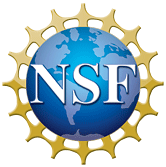Assimilation of MODIS snow cover through the Data Assimilation Research Testbed and the Community Land Model version 4
To Access Resource:
Questions? Email Resource Support Contact:
-
opensky@ucar.edu
UCAR/NCAR - Library
| Resource Type | publication |
|---|---|
| Temporal Range Begin | N/A |
| Temporal Range End | N/A |
| Temporal Resolution | N/A |
| Bounding Box North Lat | N/A |
| Bounding Box South Lat | N/A |
| Bounding Box West Long | N/A |
| Bounding Box East Long | N/A |
| Spatial Representation | N/A |
| Spatial Resolution | N/A |
| Related Links | N/A |
| Additional Information | N/A |
| Resource Format |
PDF |
| Standardized Resource Format |
PDF |
| Asset Size | N/A |
| Legal Constraints |
Copyright 2014 American Geophysical Union. |
| Access Constraints |
None |
| Software Implementation Language | N/A |
| Resource Support Name | N/A |
|---|---|
| Resource Support Email | opensky@ucar.edu |
| Resource Support Organization | UCAR/NCAR - Library |
| Distributor | N/A |
| Metadata Contact Name | N/A |
| Metadata Contact Email | opensky@ucar.edu |
| Metadata Contact Organization | UCAR/NCAR - Library |
| Author |
Zhang, Y. Hoar, Timothy J. Yang, Z. Anderson, Jeffrey L. |
|---|---|
| Publisher |
UCAR/NCAR - Library |
| Publication Date | 2014-06-27T00:00:00 |
| Digital Object Identifier (DOI) | Not Assigned |
| Alternate Identifier | N/A |
| Resource Version | N/A |
| Topic Category |
geoscientificInformation |
| Progress | N/A |
| Metadata Date | 2025-07-12T00:07:43.197593 |
| Metadata Record Identifier | edu.ucar.opensky::articles:14238 |
| Metadata Language | eng; USA |
| Suggested Citation | Zhang, Y., Hoar, Timothy J., Yang, Z., Anderson, Jeffrey L., Toure, A., Rodell, M.. (2014). Assimilation of MODIS snow cover through the Data Assimilation Research Testbed and the Community Land Model version 4. UCAR/NCAR - Library. https://n2t.org/ark:/85065/d7c82b8s. Accessed 04 October 2025. |
Harvest Source
- ISO-19139 ISO-19139 Metadata

